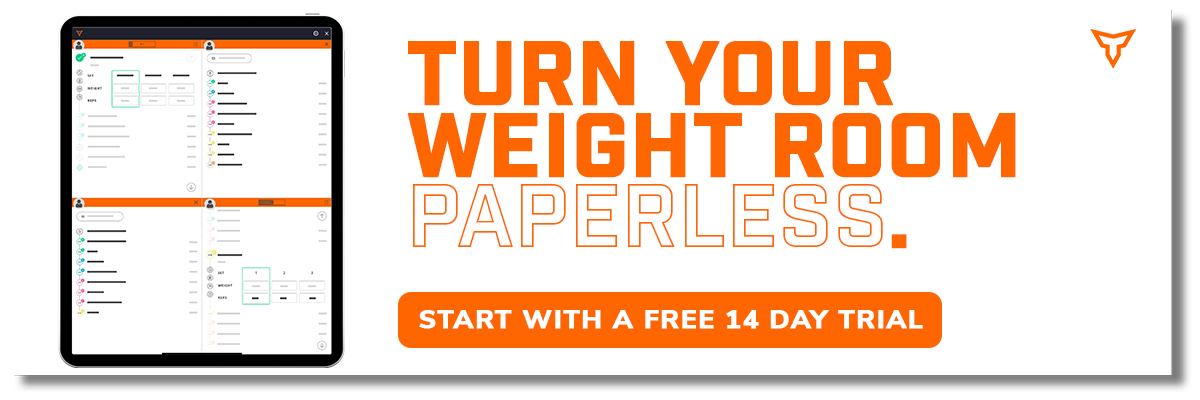Metabolic Circuit Training for General Population
During my time in the private sector and in my own business, I have worked with a wide variety of general population groups. While strength was important for these people, it was not everything. As a result, I had to venture into new ideas and programming schemes of conditioning that I was not used to prescribing. In this article, I will give examples of prescriptions, methods & considerations that I have adapted overtime to generate results for the general population.
Needs Analysis of the General Population:
Traditionally, the general population just wants to be “fit”. However, there are many ways we can define that. Defining this term has been a challenge for many strength coaches, however, it really just translates to having a high base of general physical preparation. The majority of the general population wants to be physically resilient to injury, have good body composition, and be able to complete the day’s activities/stay healthy for their families.
As we know, injuries that traditionally plague the general population are ankle, knee, low back, and shoulder based. Upper Crossed Syndrome, Lower Cross syndrome, lack of core stability, and high body fat percentage cause a good number of injuries within this population due to the sedentary lifestyle most of them have become accustomed to.
Programming Methodologies
1. As Many Rounds As Possible (AMRAP)
As the name suggests, the objective of this method is to have a set time normally somewhere ranging from 10-45 minutes with 3-6 different movements geared toward producing high levels of metabolic stress and increasing overall work capacity. There are hundreds of examples coaches could use, develop, and refine. So, for the purposes of this section, let’s look at three different examples. Specifically, 10-minute, 20 minute and 30-minute examples.
Examples/Methods
- Model 1: 10 Minutes (AMRAP 10)
- Movement 1: Barbell Thrusters x10
- Movement 2: Sandbag Carry x 100 ft
- Movement 3: Rower x 12 Cal
The reason for this specific AMRAP being only 10 minutes is due to the higher intensity of the exercises combined with the number of exercises. Fatigue will set in and the heart rate will increase dramatically as the athlete nears the end of the 10-minute duration. This style is rather taxing, so please take some precautions as a coach and be ready to have modifications in place for certain individuals within the general population groups.
- Model 2: 20 Minutes (AMRAP 20)
- Movement 1: Sled Rows x 8 @ 100 lbs
- Movement 2: Bear Crawl x 50 ft
- Movement 3: Echo Bike x 12 Cal
- Movement 4: Ski Erg x 12 Cal
The 20-minute AMRAP differs from the 10-minute AMRAP in a number of ways. The first is that due to its duration, there are 4 movements compared to the 3 in the 10-minute AMRAP. You will notice the motions are broken down into one strength movement (rows), one core stability movement (bear crawl) and two cardiovascular machines (Echo Bike and Ski Erg). The cardiovascular component reduces the risk of injury while maintaining movement integrity. This helps the athlete by allowing them to perform the sled rows and bear crawls with better form so they can last the duration of the AMRAP while maintaining the increased heart rate. Remember, we are attempting to build a more fit human being, not create the next LeBron James or Usain Bolt.
- Model 3: 30 Minutes (AMRAP 30)
- Movement 1: Run 400 M
- Movement 2: Plank Hold x 30 sec
- Movement 3: Rower x 500 M
- Movement 4: Side Plank
- Movement 5: Bar Hang x 30 sec
Due to the AMRAP 30 having the longest duration, I try to limit any spinal loading to decrease the likelihood of injury under fatigue. You will see 2 cardiovascular movements, 2 core stability movements, and 1 grip strength/spinal decompression (Hang From Bar). Since the general population struggles with back injuries as one of its limiting factors, the hang from bar allows gravity to cause traction in the spinal cord and allow for some decompression to occur. Running traditionally can put a lot of stress on the legs and back as well, so use other methods to assist if need be. This 5th movement also allows for the athlete to bring their heart rate down and increase the likelihood of lasting the full duration with no breaks.
2. Every Minute On The Minute (EMOM)
Every minute on the minute training has been used in athletic development for a while to enhance power and maintain strength. Below are three different models that can be utilized. The strongman model will utilize 1-2 heavier strength lifts, plus 2 cardiovascular exercises. The key is to have 20-30 seconds of work with 30-40 seconds of rest within the minute before starting the next exercise.
Examples/Methods
- Model 1: Strongman Metabolic EMOM 16
- Min 1: Trap Bar Deadlift (50-60% 1RM/5-6 RPE) x 20 -30 sec
- Min 2: Side Plank x 20-30 sec each side
- Min 3: Zercher Yolk Carry x 20-30 sec
- Min 4: Assault Bike x 10-14 calories
- Repeat circuit 4 times through
The strongman model will utilize 1-2 heavier strength lifts, plus 1 cardiovascular exercise, and 1 core stability exercise. The rationale behind the lower time period is due to the heavier strength exercises combined with cardiovascular exercises that are set at higher intensities. Please note that this type of metabolic training goes well with phases emphasizing strength as the primary adaption, while still building a higher base of general physical preparation (GPP).
- Model 2: Cardio Only EMOM 24
- Min 1: Run 150-250 M/20-40 sec
- Min 2: Row 150-250 M/Max calories in 20-40 sec
- Min 3: Assault Bike 10-14 calories/max cal in 20-40 sec
- Min 4: Ski Erg 10-14 calories/max cal in 20-40 sec
- Repeat circuit 6 times through every minute on the minute
The cardio only model will utilize 4 cardiovascular based exercises. It can be as little as 20 minutes lasting up to 48 minutes maximum in more tenured populations. Please note that this phase will reduce strength gains due to its aerobic focus. It is possible, however, to still make gains in work capacity, building a massive aerobic base, increase fat utilization and making a generally healthy/fit individual.
- Model 3: Mixed Methods EMOM 20
- Min 1: KB Goblet Squat x 20 sec or 8-14 reps
- Min 2: C2 Rower x 12 cal or 150-250 M
- Min 3: Hanging Knee Raises x 10-20
- Min 4: Pendlay Row x 20 sec or 8-14 reps
- Min 5: Assault Bike x 12 cal or 150-250 M
- Repeat 4 times through
The mixed methods approach is based on both the strongman and cardiovascular models above. Normally, I will put 5 different movements (2 strength based, 1 core stability, and 2 cardiovascular). This will still build a reasonable level of strength/GPP in the general population while maintaining a metabolic training emphasis for the assigned block of the workout.
Author’s Note: None of the three methods are set in stone with volume and intensity ranges. Please feel free to adjust as needed based on population. The above models are merely examples that my colleagues or I have used in the past.
3. Traditional Circuit Training
Traditional Circuit training is generally the most common approach that I have seen used within the general population groups. Mainly because it has a great ability to be controllable within large groups where schedules are not as consistent as coaches would prefer. We can control the intensity, duration, time, and volume all very easily within this model. Utilizing this model can make significant progress in building an aerobic base, increasing lactic threshold or even building sustained power output.
Below is an example of a traditional model used by my general population groups in the past. For this example, we are attempting to build the anaerobic threshold using a 2:1 work to rest ratio.
- 30 sec on/ 15 sec off x 6-8 rounds
- Movement 1: Single Leg Lower Push Variation
- Ex: step ups, lunges, split squats, etc
- Movement 2: Horizontal Pull Variation
- DB rows, cable rows, barbell rows, etc
- Movement 3: Cardio Machine Variation
- Assault Bike, rower, ski erg, etc
- Movement 4: Cardio Machine Variation 2
- See variations above in “Movement 3”
- Movement 1: Single Leg Lower Push Variation
Author’s Note: A common obstacle in this training is boredom or even mental fatigue. As a coach, I like to utilize a wide range of exercises within a main movement pattern set. For example, for the single leg lower push variation, I give three options: 1. Step Ups, Lateral Lunges, Split squats. Whatever variation the client chooses is the variation they must stay with for all rounds. On another given day in the training cycle; they are allowed to change variations.
4. Ascending Circuit Training
Ascending circuit training is where the volume increases for every round that the athlete completes. This could be done with reps, calories, distance, etc. Please note that the load can vary, but in my experience, I have found that having a constant load offers a more efficient training block or session. In the models below, we can see three different examples. Model 1 is solely with cardiovascular equipment, Model 2 is solely with weights, Model 3 is with a mixture of both.
- Model 1: Cardio equipment only
- A1: Echo Bike: 3, 6, 9, 12, 15, 18, 21 calories
- A2: Rower: 3, 6, 9, 12, 15, 18, 21 calories
- A3: Assault Treadmill: 3, 6, 9, 12, 15, 18, 21 calories
- A4: Ski Erg: 3, 6, 9, 12, 15, 18, 21 calories
Note: this can be completion of calories and equipment superseded together for time or for a set time, such as a 20–30-minute AMRAP as well
- Model 2: Weight equipment only
- A1: DB Goblet Squat x 2, 4, 6, 8, 10, 12 reps, 50 lbs KB
- A2: DB Overhead Press x 2, 4, 6, 8, 10, 12 reps, 40 lbs DBs
- A3: KB Swing x 2, 4, 6, 8, 10, 12 reps 50 lbs KB
- A4: KB Gob Carry x 50 ft, 100 ft, 150 ft, 200 ft, 250 ft 50 lbs KB
Note: Similar to the cardio equipment model, this can be done within the AMRAP method for a set time or completed with set loads & reps for time. If you choose to go for loads and reps please make sure to consider injury history, tenure of the individuals/group, and exercise selection with high caution.
- Model 3: Both weights and equipment
- A1: DB Goblet Squat x 2, 4, 6, 8, 10, 12 reps 40 lbs DB
- A2: Bent Over Barbell Row x 2, 4, 6, 8, 10, 12 reps, 95-135 lbs barbell
- A3: Assault Bike x 3, 6, 9, 12, 15, 18, 21 calories
- A4: Rower: x 3, 6, 9, 12, 15, 18, 21 calories
5. Descending Circuit Training & Pyramid Circuit Training
Similar to the ascending circuit training, descending and pyramid circuit training encompass a very similar idea. Due to the longer duration and increases in time per set, the ascending circuit training becomes more aerobic as the duration in each set increases. On the flip side of the equation, descending circuit training starts at the higher calories or rep ranges and descends into a higher intensity, lower rep/calorie ranges, while under more fatigue. You will see that this model starts with lower intensity and finishes with higher intensity while accumulating high levels of lactate building up in the muscle.
Pyramid circuit combines both ascending and descending circuits. Calories/rep ranges will start high volume per set and progress to lower volume per set. At the half way point the volume builds back up from lower volume per set to higher volume per set. Below is an example of both of these utilizing an assault bike and rower.
Descending:
- Assault Bike descending circuit training: 20 cal, 16 cal, 12 cal, 8 cal, 4 cal for time
- Rower descending circuit training: 20 cal, 16 cal, 12 cal, 8 cal, 4 cal for time
- Assault Bike descending circuit training: 16 cal, 12 cal, 8 cal, 4 cal, 8 cal, 12 cal, 16 cal for time
- Rower descending circuit training: 16 cal, 12 cal, 8 cal, 4 cal, 8 cal, 12 cal, 16 cal for time
Periodization for All Pyramid Training:
Due to the higher volume, it is best to structure the programming progressions for the ascending, descending, and pyramid training.
- Progression 1: Ascending to build the aerobic base & overall work capacity
- Progression 2: Descending to build the overall work capacity of the athlete and a higher lactate threshold & intensities as the sets progress
- Progression 3: Pyramid for enhancing the total work capacity and volume for the more tenured athlete
With all the models above for the metabolic circuit training, please note that there is no perfect way to do things. Yes, all these models would be great to implement in a perfect world, however as a coach, you must be able to adapt and modify based on many different uncontrollable factors. The crazy part about working with the different tenures of the general population is that you truly never know what you are going to get as far as tenure and experience in training goes. The biggest piece of advice I could give a young coach who has been tasked to coach general populations is listen with intent and ask questions about what these individuals or groups want. As always, I hope this article has helped shed some light on metabolic conditioning training models for the general populations. Please reach out to me directly via Instagram with any questions.
Subscribe to our blog
Subscribe to receive the latest blog posts to your inbox every week.
Related posts

Strategies for Managing Team Lifts in the Private Sector

Considerations for Training High School Volleyball Athletes


